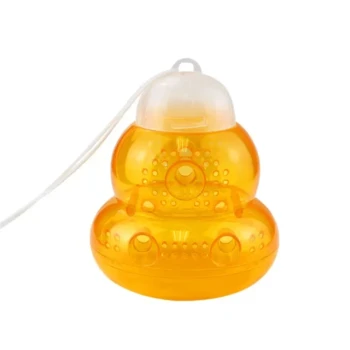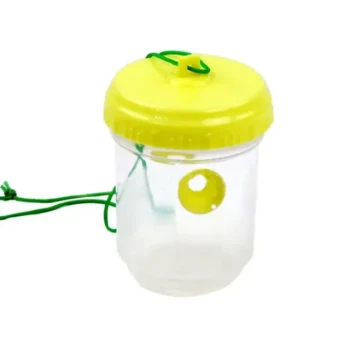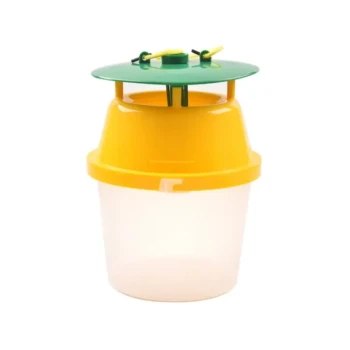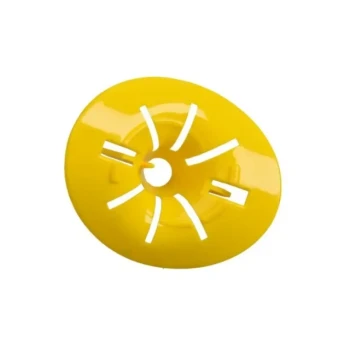At their core, hive beetle traps are simple devices that exploit the natural behavior of the Small Hive Beetle (SHB). They work by luring beetles into a compartment from which they cannot escape, typically using an attractant like oil or a food-based bait. The main types of traps fall into two broad categories: small, disposable in-hive traps that are placed between frames, and larger, external traps that are integrated into the hive stand itself.
The specific type of trap you choose is less important than how you use it. Effective beetle control comes from strategically placing traps where bees will naturally chase the beetles, and then diligently maintaining those traps as part of a larger hive health strategy.
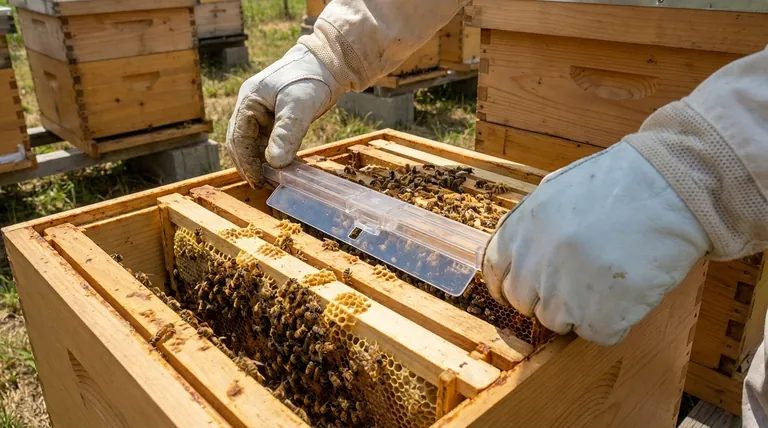
Understanding the Two Main Categories of Traps
Small Hive Beetles instinctively seek out dark, tight crevices to hide from bees. Effective trapping strategies create artificial crevices that lead the beetles to their demise. Traps are generally classified by where they are placed relative to the hive body.
In-Hive Traps: Targeting Beetles Inside the Colony
These are the most common types of traps used for routine monitoring and control. They are placed directly inside the hive, usually in the top super, where beetle activity is often highest.
The primary advantage of in-hive traps is that they work in concert with the bees. Worker bees will identify and chase beetles, effectively "herding" them towards and into the traps you've placed.
The "Beetle Blaster" Style Trap
This is a very common, disposable plastic trap. It consists of a thin, rectangular reservoir with a slatted top that is placed hanging between two frames.
The reservoir is partially filled with a non-toxic killing agent, most often mineral oil or vegetable oil. Beetles, seeking refuge from the bees, crawl through the slats and fall into the oil, where they are quickly dispatched.
Pollen & Lure-Based Traps
These traps are a variation on the oil trap design. They often feature a central compartment where a bait or lure, such as a small piece of pollen patty or a few drops of apple cider vinegar, can be placed.
This bait is designed to attract the beetles, while separate, adjacent compartments contain the oil or another killing agent like food-grade diatomaceous earth.
External Traps: Creating a Perimeter Defense
External traps are designed to intercept beetles before they can establish a population inside the hive. They are a proactive measure, particularly useful in areas with high beetle pressure.
The most common design is the hive stand oil trap. These are trays or containers filled with oil that are integrated into the feet or legs of the hive stand. Beetles crawling up the stand from the ground are caught before ever reaching the hive entrance.
The Principles of Effective Trap Placement
Simply having a trap is not enough; its placement and maintenance are what determine its success or failure.
Placement Between Frames
For in-hive traps like the Beetle Blaster, placement is critical. They should be positioned in the upper hive body, hanging between two of the outer frames (e.g., between frames 1 and 2, and 9 and 10 in a 10-frame box).
Crucially, the trap must sit perfectly flush with the top of the frames. If a gap is left, beetles will simply hide underneath the trap instead of going inside it, rendering it useless.
Determining Trap Density
The number of traps to use depends on the severity of your beetle problem. This allows you to scale your response as needed.
For normal maintenance and prevention, use one trap per hive body or super. For a more aggressive approach to an active infestation, increase this to two traps per box.
Understanding the Trade-offs and Limitations
While effective, traps are a component of Integrated Pest Management (IPM), not a standalone cure. Understanding their limitations is key to realistic expectations.
Traps are a Tool, Not a Silver Bullet
Traps help manage and reduce the beetle population within a hive, but they do not eliminate the threat. The number one defense against hive beetles is a strong, populous, and healthy honeybee colony that can effectively police its own hive.
The Risk of Spills
Oil-based in-hive traps carry a small but significant risk. If a trap is installed improperly or dislodged during an inspection, oil can spill onto the frames. This can contaminate honey and is harmful to bee larvae and pupae.
The Need for Consistent Maintenance
A forgotten trap is worse than no trap at all. Traps must be monitored, cleaned, and refilled regularly. A full or decomposing trap is no longer effective and can become a source of mess and decay within the hive.
Making the Right Choice for Your Hive
Your trapping strategy should be tailored to the specific conditions of your apiary and the level of beetle pressure you face.
- If your primary focus is routine prevention: Use one in-hive "Beetle Blaster" style trap per box, placed correctly between outer frames, and check it during regular inspections.
- If you are facing a heavy, active infestation: Deploy two in-hive traps per box for aggressive control and consider adding external hive stand traps to catch beetles from all entry points.
- If your priority is minimizing in-hive materials: Focus your efforts on external hive stand oil traps, which keep the killing agent completely outside the colony's living space.
Ultimately, the most effective trap is one that is consistently maintained as part of a comprehensive approach to promoting overall hive health.
Summary Table:
| Trap Type | Primary Placement | Key Feature | Best For |
|---|---|---|---|
| In-Hive (e.g., Beetle Blaster) | Between frames in the top super | Uses oil or bait to lure and drown beetles | Routine monitoring and control within the colony |
| External (e.g., Hive Stand) | Integrated into the hive stand | Catches beetles crawling up from the ground | Proactive perimeter defense, heavy infestations |
Ready to implement a robust beetle control plan for your apiary?
HONESTBEE supplies the reliable beekeeping supplies and equipment that commercial apiaries and distributors depend on. We provide the high-quality traps and components you need to protect your hives effectively.
Contact our wholesale experts today to discuss your specific needs and discover how our products can support your operation's health and productivity.
Visual Guide
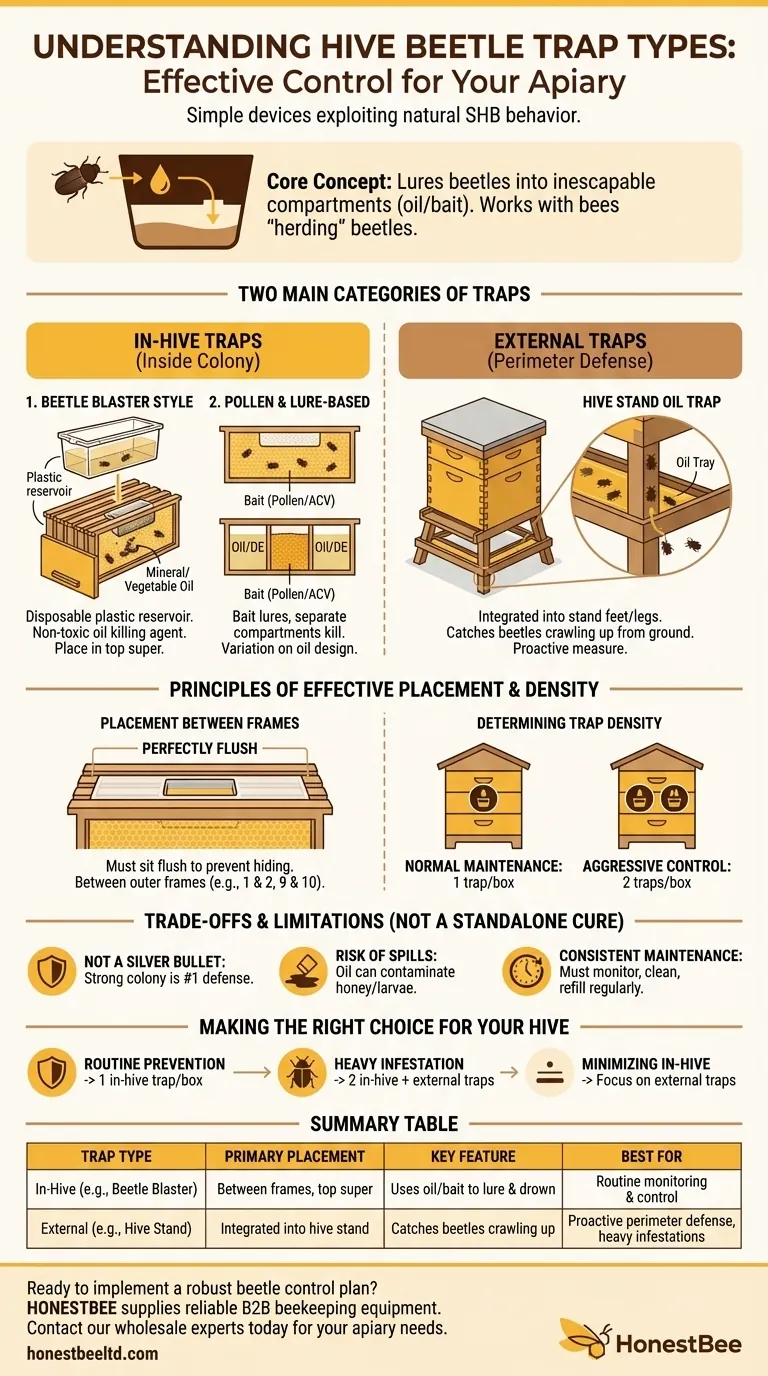
Related Products
- Reusable Clear Small Hive Beetle Traps for Beehives Beetle Trapping Tools
- Reusable Aluminium Beetle Trap for Small Hive Beetles Silver Bullet
- Plastic Beetle Blaster Trap Beekeeping Tools and Supplies
- Removable Washable Hive Beetle Trap Attractants for Small Hive Beetles
- Black Plastic Beetle Barn Hive Beetle Trap for Beehives
People Also Ask
- What tips can help prevent hive beetle infestations? Build Strong Colonies & Master Apiary Hygiene
- How do hive beetle traps work? A Beekeeper's Guide to Non-Chemical Control
- What is the best time to use beetle traps? Master the Spring Strategy for Effective Hive Protection
- How should filled beetle traps be handled? Safely Remove and Dispose to Protect Your Hive
- Why are hive beetle traps important for beekeepers? Protect Your Hive from a Devastating Infestation







